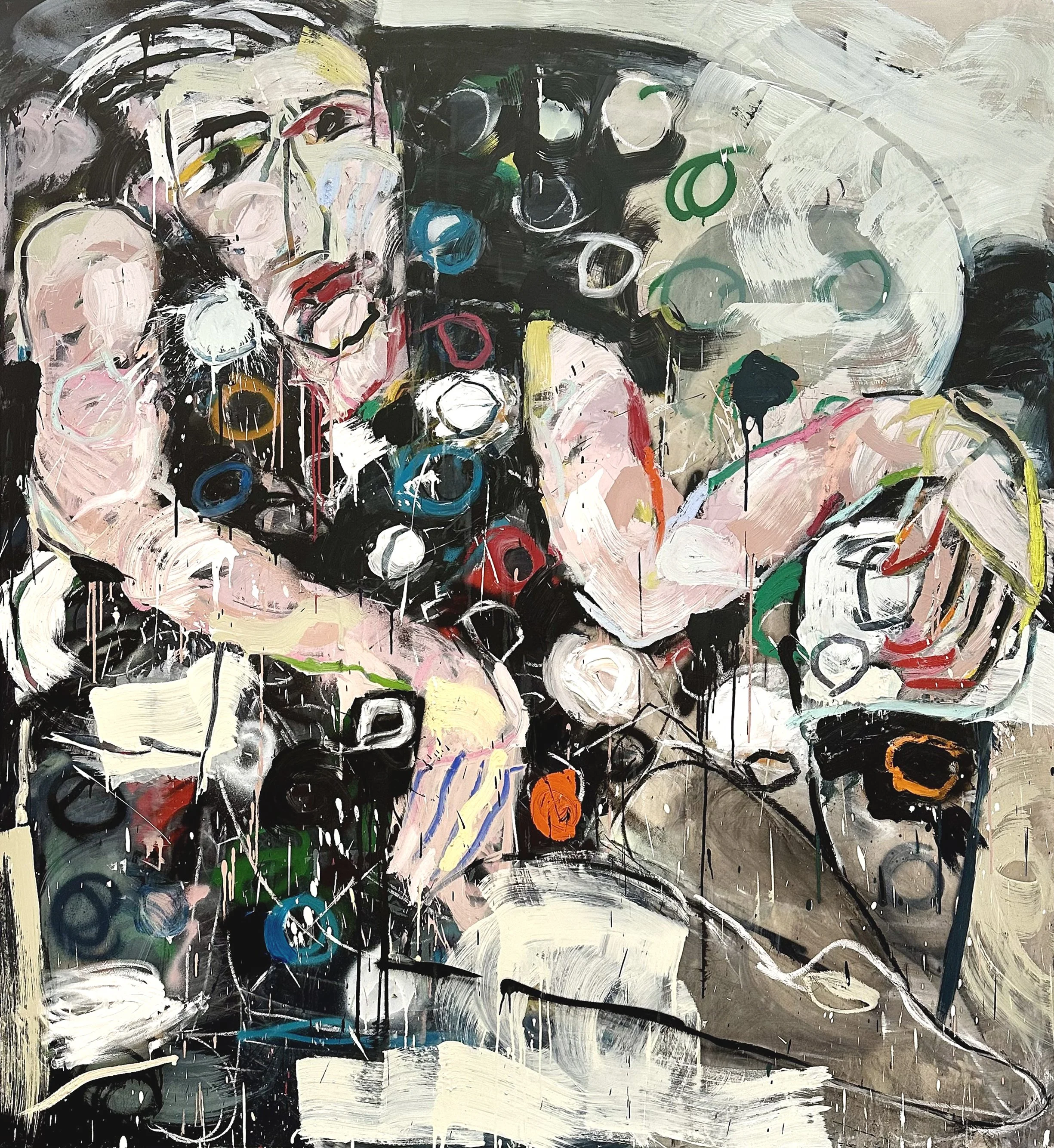Moira Cameron
Moira Cameron (British, b. 1962) was born in London to a family of artists. Her father was the celebrated figurative sculptor Ronald Cameron (1930-2013). Her mother, Dorothy Cameron, was a sculptor in her own right. Half a century earlier, Dorothy’s mother had been among the first women to attend art school.
Cameron earned a BA (Fine Art) from Ravensbourne College of Art and an MFA from Chelsea College of Art. In the 1980s, she and her husband, artist David Spiller (1942-2018), moved to New York City. Amidst the bustling streets and graffiti-fueled art scene, Cameron began experimenting with paper sacks as a medium for her artwork. Sourced from her daily life and travels, then cut, patched, glued, and stenciled into something new, the shopping bags are both imbued with personal memories and more broadly representative of the signs, symbols, and sayings of 1980s and 1990s popular culture. As art historian Fraser Brough notes, Cameron’s work repurposing and transforming the discarded materials of everyday life “still looks fresh, raw without being messy, expressive without being naïve.” And over thirty years later, the way in which Cameron embraced sustainable art forms and popular slogans such as “Reduce, Re-use, Recycle” feels, in Brough’s words, “remarkably prescient” for our world today.
Cameron also creates artwork in partnership with her son, Xavier Spiller-Cameron, under the moniker Spiller + Cameron. Their works are assembled in union, with each collaborator bringing his and her strengths and weaknesses to the partnership—Xavier introducing his youthful, contemporary energy to Cameron’s maturity and experience. The duo describes their artistic process as a sort of “alchemy,” in which a base product is mystically transformed into something beautiful. Like Cameron’s work with paper bags, Spiller + Cameron “upcycle” discarded paint rags and other materials; after they are primed, ironed, and meticulously stitched together, the resulting “collages” are so precise that the stitches almost disappear. The paintings harness the energy of the materials’ previous use and, like alchemy, transmute a base product into something worthy of contemplation.
In July 2025, Cameron’s figurative self-portrait, A Life Lived, won the National Portrait Gallery’s Herbert Smith Freehills Kramer Portrait Award, chosen from 1,300 international submissions.







